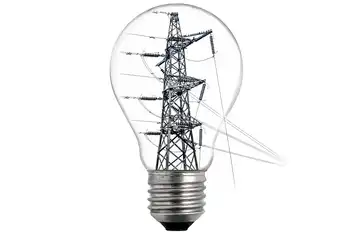Utility program opens doors to more renewable energy in Rhode Island
By National Grid
NFPA 70b Training - Electrical Maintenance
Our customized live online or in‑person group training can be delivered to your staff at your location.

- Live Online
- 12 hours Instructor-led
- Group Training Available
The Renewable Energy Growth program was created following passage of legislation to encourage Rhode Islanders to install more renewable distributed generation that will feed clean electricity directly into National GridÂ’s distribution system.
The program also sets out a new, streamlined process for the enrollment of small and medium scale projects, and makes it easy for owners and hosts of renewable distributed generation systems to receive payments for their generation from National Grid.
“The Renewable Growth Program is in direct alignment with Connect 21, National Grid’s vision of the energy company of the future. We expect it to open renewable energy opportunities to more Rhode Islanders,” said Timothy F. Horan, President of National Grid in Rhode Island. “The program is designed to lead to a reduction of greenhouse gas emissions, provide the state with greater energy diversification and help meet energy demand during periods of peak usage.”
The goal of the Program is to add an additional 160 megawatts MW of new, renewable distributed generation in Rhode Island over the next five years. These facilities will produce enough electricity to power approximately 30,000 homes per year. Currently approximately 20 MW of renewable distributed generation is connected and operating in the state, with more than 25 MW in various stages of development.
“The State is excited to see the launch of the Renewable Energy Growth Program for homeowners, businesses and municipalities looking to install renewable energy systems,” said Marion Gold, Commissioner of the Rhode Island Office of Energy Resources. “The Renewable Energy Growth Program will increase clean energy generation in Rhode Island and put individuals, including general contractors and electricians, to work in the state’s renewable energy sector.”
Enrollment in the Program is governed by a process and rules that were approved by the Rhode Island Public Utilities Commission PUC. The Program was developed with input from the Rhode Island Distributed Generation Board, the Office of Energy Resources, the New England Clean Energy Council, the Conservation Law Foundation and public comment that was submitted to the Distributed Generation Board and the PUC.
Applications for small solar projects at or less than 25 kW DC will be accepted on an open, rolling basis beginning on June 15. Applications for other eligible projects will be accepted for the first time during a two-week enrollment period that will open on August 3.
Out of the 25 MW being offered for enrollment in 2015, three MW are reserved for small solar projects. Projects can enroll in the program in different ways based on their size. Larger projects over 250 kilowatts need to compete based on price, but others will receive a preset rate for the power generated that varies with project specifics.











